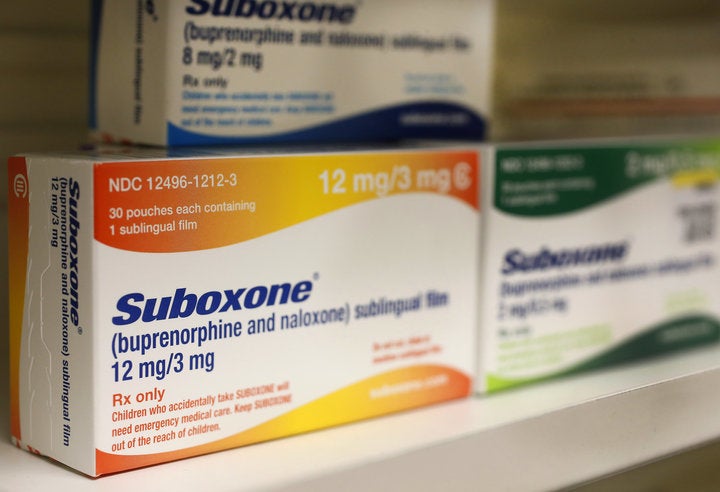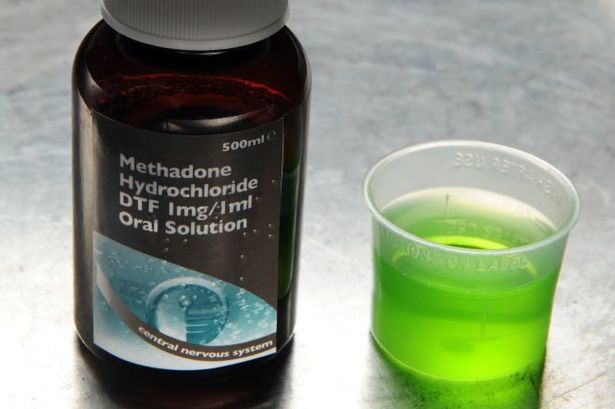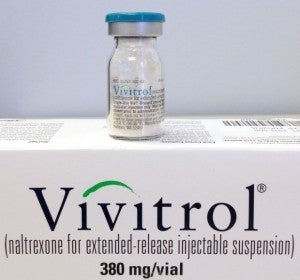As an addiction therapist, I treat a lot of opiate and opioid addicts, and I watch a few die every single year. I mostly espouse abstinence, support groups, and individual therapy as the best road to recovery. So it is with great anticipation that I await President Donald Trump’s promise to “declare a national emergency in response to the opioid crisis.” Let’s hope he unleashes “fire and fury like the world has never seen” to the war on opiates, an enemy that has killed more Americans than all our other enemies combined. I do have some educated predictions about what I think will happen.
First, some of the things that will probably not happen, but should, are: A) increased salaries for drug counselors, who are notoriously underpaid, and B) More access to drug treatment facilities through improved healthcare insurance, which is unlikely, given Trump’s stance on health insurance. (Currently only 10.8 percent of those who need treatment actually get it.)
What you will see, no doubt, is an increase in Medication Assisted Treatment (MAT) and Replacement Therapy, which are not quite synonymous. “Medication-assisted treatment (MAT), including opioid treatment programs, combines behavioral therapy and medications to treat substance use disorders,” according to the Substance Abuse and Mental Health Services Administration (SAMHSA).
Now a skeptic might say, “But that’s just treating drug addiction with another drug.” Or, “Yeah, right, pour money back into the coffers of the drug companies, the very people who caused the opioid crisis in the first place.”
But I didn’t say that. Science is firmly behind MAT. From the 2016 Surgeon General’s Report, “Facing Addiction in America”: “Use of medications to treat addiction has been controversial at times because of a longstanding misconception that methadone and, more recently, buprenorphine, which control opioid craving and withdrawal, merely ‘substitute one addiction for another.’ This belief has reinforced scientifically unsound ‘abstinence-only’ philosophies (meaning abstinence from opioid-based medications as well as from illicit and misused drugs) in many treatment centers and has severely limited the use of these medications,” and “Abundant scientific data show that long-term use of maintenance medications successfully reduces substance use, risk of relapse and overdose, associated criminal behavior, and transmission of infectious disease, as well as helps patients return to a healthy, functional life.”
Some might take issue with the Report, and many claim that drug companies and insurance companies are funding the majority of the studies from which the Surgeon General draws. But I didn’t say that.
Recovery advocate Ryan Hampton writes, “While the recommendations of the President’s commission are a step in the right direction, Trump and his commission missed a major point completely. We must bring recovery support services to scale in this country. That means bringing the people who’ve survived addiction to the table and learn from them. People in recovery need access to peer to peer support services, recovery housing, and employment.”
But MAT is the wave of the future, and here’s what you can expect.

Suboxone Sublingual Strips
SUBOXONE (BUPRENORPHINE AND NALOXONE)
A couple of years after I became an addiction therapist in 2001, Suboxone was hailed as the detox savior for opiate/opioid addicts, and it was even used as a maintenance drug in a small percentage of cases, always with the intention of getting the patient off of it as soon as possible. Today the reviews are mixed, but, as with all the medications listed below, science is firmly behind the use of Suboxone or its major opioid replacement component, buprenorphine, as a detox AND maintenance drug.
Few people know it, but buprenorphine was first marketed by Reckitt Benckiser in 1978 as a painkiller. Now it is the opioid component of Suboxone, which is the most widely used opioid/opioid replacement drug. Suboxone, which consists of buprenorphine and naloxone, is a drug that was originally used solely for detox purposes, for a week or two, and that’s still its most common usage. “Bupe” binds so tightly to opioid receptors in the brain that other opioids can’t bind. The user who tries to take both will get very sick. So the addict is slowly weaned off the drug and theoretically can’t use their drug of choice, and when the tapering off is finished, the patient is clean and physiologically not craving.
Used correctly, Suboxone is the most useful detox drug in existence. And the Surgeon General’s 2016 Report, “Facing Addiction in America,” affirms that long-term Suboxone maintenance, combined with treatment and counseling, is more effective than abstinence. The drug is now used successfully, for months and even years, by tens of thousands of people daily.
Buprenorphine is a “semi-synthetic partial opioid agonist,” and that that means that, as a Suboxone sales rep once told me, “It’s not really abusable.” That’s not true at all, actually.
Buprenorphine is about 30 times more powerful than morphine at low doses, and it will get you high, but at high doses, there is a “ceiling” effect, so once you get past about 16-32 mg you won’t get much higher. It’s also hard to OD and die on “bupe,” but it does happen. Buprenorphine or Suboxone has emerged as a street drug. It’s currently the most desired drug in California prisons. A report by the Substance Abuse and Mental Health Services Administration (SAMHSA) found a ten-fold increase in the number of emergency room visits involving buprenorphine. Over half of the 30,000 hospitalizations in 2016 were for non-medical use of buprenorphine.
Most important, the longer you use it the harder it is to get off of it. Matt L, a Ventura, California resident who was in treatment for heroin addiction when I spoke to him, asserts, “The ‘kick’ (suffering when weaning off the drug) is worse than heroin. it is by far the most addictive drug I’ve ever encountered, and that includes methadone.”
So Suboxone is not a panacea. But it might be the best we can offer addicts right now.

Methadone Liquid
METHADONE
There is no more controversial maintenance drug than methadone. It’s an opioid, but it doesn’t deliver the buzz of a “real” opioid like OxyContin or an opiate like heroin. It definitely reduces withdrawal symptoms in addicts. Methadone is also an effective pain reliever, and is only available from certified pharmacies, doctors, clinics, and outpatient programs. Overdose is a real danger, and death is possible. More important, methadone, according to every patient I’ve ever met on methadone maintenance, is incredibly difficult to kick.
You’re going to be hearing a lot more about methadone if a State of Emergency is declared, because it will definitely be used more.
Many former patients have nothing good to say about their years, months, or even days on methadone. Tiffany Carrasco of Pasadena, California says, “Methadone was the worst experience of my life. I personally describe it as liquid handcuffs.” Davis Bartels, a real estate broker from Thousand Oaks, California, writes, “Awful, detoxing methadone was the worst, I could feel it in my bones. If you must take a detox med a few days on Suboxone is a better route.” Lisa Dorr of Pasadena says, “It sucked! The clinic was never able to find the right dose for me, I was constantly dripping with sweat, my bones hurt so I didn't sleep well. Started at 20 mg and went as high as 100 mg, after 60 mg I stopped having a period and it was severely painful, it constipates you to the extreme! I also know that people often use on it.”
But there are true methadone success stories, and the scientific studies validate methadone, in combination with counseling, treatment, support groups, and therapy as an effective maintenance drug. “Death rates of patients after leaving treatment were more than twice the death rates of patients who remained in treatment,” concludes an oft-quoted study. Kirsten Hudson, whom I met on a Facebook Page called Methadone Advocacy, writes, “Methadone treatment is surrounded in myths, assumptions, and misinformation. Methadone was not my first choice, but I am SO GLAD that I chose this path, and wouldn’t have it any other way. Thanks to Methadone, my counselor, and my family, I have been clean since July 29th, 2015. Yes, I said CLEAN. Because I am! If I haven’t used drugs in over two years, I am clean.”
Dr. Jeremy Martinez, addiction expert and CEO of Matrix Institute on Addictions in Los Angeles, concludes, "No matter how controversial, we need to recognize that methadone treatment is well known to reduce heroin relapse and overdose death."

Vivitrol (Naltrexone)
NALTREXONE (VIVITROL AND REVIA)
Of all the medications used to treat opioid addiction, naltrexone is probably the least controversial. While it does not exactly replace opioids in the way that buprenorphine and methadone do, it does block the opioid receptors in a way that makes it hard to get high. (It works that way for alcohol, too.)
Insurance companies and alcohol and drug treatment specialists like naltrexone because it’s not addictive, and it is administered intramuscularly to provide constant effectiveness, theoretically, for 30 days. (In reality the dosage may not be very effective near the end of the cycle.) The theory is that addicts won’t even think about getting high, because they can’t, or it’s too much trouble. For many people, that’s actually true. Others are undeterred, and the truth is that you can overcome the blocking effect and get high, if you are persistent. “If you use enough heroin, you can go past the blocking activity,” says a client of mine who prefers anonymity. “But I don’t recommend that because it’s also much easier to die that way.”
Naltrexone does have side effects, but the advantages outweigh them. (Naltrexone should not be confused with naloxone (see below), which is used in emergency cases of opioid overdose.)

Narcan (Naloxone)
NARCAN (NALOXONE)
Naloxone, commonly known as Narcan, and not to be confused with naltrexone (see above), is a medication that rapidly reverses opioid overdoses. It quickly restores normal respiration to a person whose breathing has slowed or stopped as a result of overdosing with opioids.
Naloxone comes in three forms: Injectable, which requires professional training, autoinjectable, which does not, and prepackaged nasal spray, which is needle-free, requires no assembly and is sprayed into one nostril while patients are supine.
Narcan is available over-the-counter in some drug stores, and it’s theoretically available OTC in California, although when I called my local Ralphs (Kroger) and CVS pharmacies in Studio City they said I’d need a prescription. Naloxone is not a walk in the park: It throws users into instant withdrawal — imagine severe flu combined with anxiety and depression, headache, changes in blood pressure, rapid heart rate, sweating, nausea, vomiting, and tremors — but it saves their life. Those treated with Narcan often use as a soon as possible to eliminate these symptoms, but at least they’re alive. Since overdoses rarely happen in clinical settings, first responders usually administer it. Here’s a Narcan/naloxone finder if you need to get some to keep on hand. To learn about the laws regarding naloxone in your state, see the Prescription Drug Abuse Policy System website.
“People who are given naloxone should be observed constantly until emergency care arrives and for at least 2 hours by medical personnel after the last dose of naloxone to make sure breathing does not slow or stop,” according to the National Institute on Drug Abuse (NIDA). The cost varies depending on where and how you get it, and what your insurance plan is. (There is help available for those with no insurance or limited funds. Kaleo, for example, the manufacturer of EVZIO, has a cost assistance program for patients with financial difficulties and no insurance.)
SCIENCE HAS SPOKEN
Medication Assisted Treatment is the wave of the future, and we — the people, addicts, pain management patients, counselors, therapists, 12-steppers, and recovering addicts — will live with it. Science has spoken.
